Sixty-eight pages, 32 articles. It is the AC75 Class Rule Draft 2A that traces the profile of the boats that will race, where no one knows yet, the 37th America’s Cup. Then there is the Draft 1A dedicated to technical rules as well as for boats, with for example the possible interventions with the relative percentages of changes, for the boats of assistance, the weather and the abbreviations also used in the Protocol, but for now, let’s browse Draft 2. Also in the AC75 Class Rule Draft 2A, together with articles for professionals with formulas, elastic modules, material density, permissible temperatures and pressures in autoclaves, there are things more accessible to mere mortals. Such as the regulation of commercial products allowed in the construction of AC75: sandwich cores, fibers for composites, equipment, paints and paints. The rule says that: “Commercial products shall be readily available for purchase by all Competitors at a reasonable market price”. These are some of the other rules you come across.
AC75. Ready to race, the AC75 must have a hull, two foils, a rudder, a mast, a set of spare rigging, a mainsail and a jib. Apart from the boxes of foils and the rudder, the AC75 must be self-draining so that there are never more than 3 liters of water left on board. Trials and tests are planned.
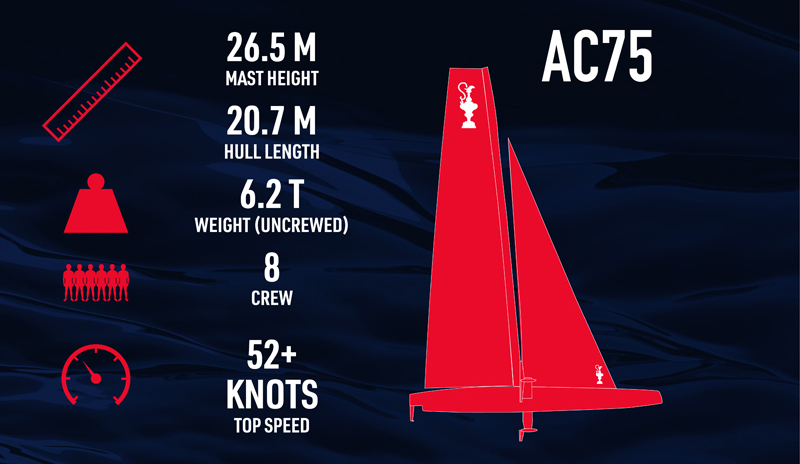
Communications on board. The Crew Information Center which cannot act on the state of the boat. It may include microphones and speakers and is based on a Samsung version 10 system.
Control systems. The control systems, for example of mast rotation, mainsail or jib adjustment, must not be able to use feedback data.
Crew. It is made up of eight human. The number may be lower for an accident, such as falling overboard.
Crew – personal equipment. Each crew member must be equipped with: life jacket, helmet, knife (blade max 15 cm), air supply, on-board communication equipment and those required by the organizers and race committee. In addition, each crew member must have at least 2.5 kg of food and drink.
Crew – position. The crew must remain within 9 meters of the transom. A crew member can go beyond 9 meters to pass on the other side of the boat or to solve a problem. If it goes over 11 meters astern it must be secured to a lifeline. It is possible to stay over 9 meters or over 11 meters only for the time necessary to solve the problem. If you are not insured you can not do anything.
Electrical and electronic systems. The crew indicator panels can provide information only in audio and / or video form. No other form of communication is allowed, for example tactile, such as vibration.
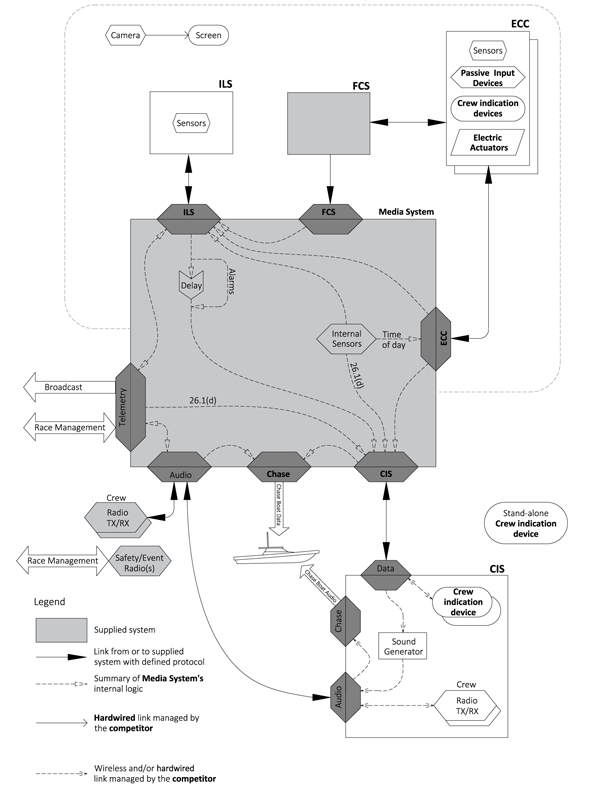
Electronic sensors. Only 13 sensors are allowed to detect data such as pressure and temperature of the hydraulic circuits, angle of the rudder, angle of the flaps, loads on the rigging, situation of the electrical circuits.
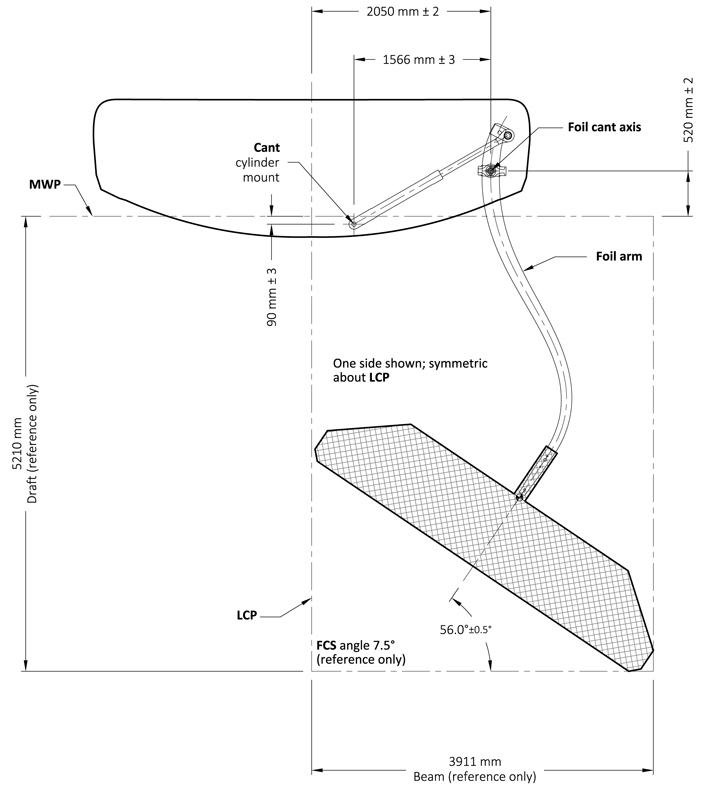
Foil. Each foil includes arm, wing and flap must be positioned between two planes located 10.0 and 12.0 meters from the transom.

Hull. The measurement rule provides measurement points and lines that trace the geometric figure within which the hull must be. For example, on the longitudinal line of the hull there is a fixed point 20.7 meters from the transom. And again, the hull can have a width from Longitudinal Center Plane of 2.40-2.50 meters; therefore a maximum beam between 4.80 and 5.00 meters.
Hydraulics. Challenger of Record and Defender will define a standard human-powered hydraulic pump. It will be the only one allowed to feed a pressurized oil storage system built by Cariboni – Hydraulic System.
Jib. The perpendicular from the luff to clew point must be 7.05 meters and a height of 18.00 meters.
Mainsail. The base must be between 7.00 and 7.40 meters long and the square top head between 2.00 and 3.40 meters. The diagonal, clew point-head point must be 26.75 meters.
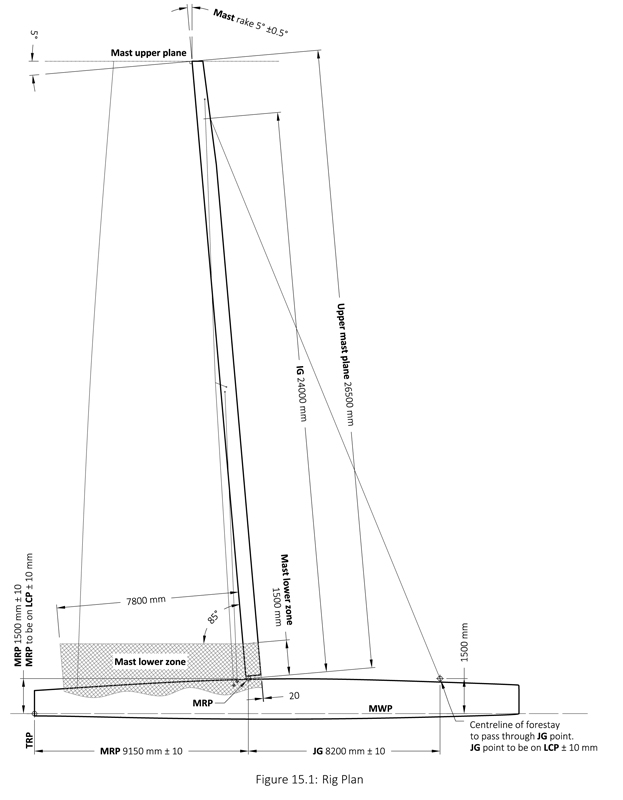
Mast. As in the 36th America’s Cup, the mast, the carbon fiber “tube”, and the rigging are provided by the organization. The mast, from the deck to the head, reaches a height of 26.50 meters.
Rudder. It cannot be positioned outside the transom. It must be inside the boat and no more than 1.50 meters from the transom.
Weights. An AC75 ready to race with crew and rig must weigh between 6,920 kg and 6,940 kg. The crew, dressed and equipped, must weigh between 712 and 740 kg. Crew weighs shall take place two days prior to the first race of each AC75 event and no new crew weigh for that AC75 event stage shall take place.
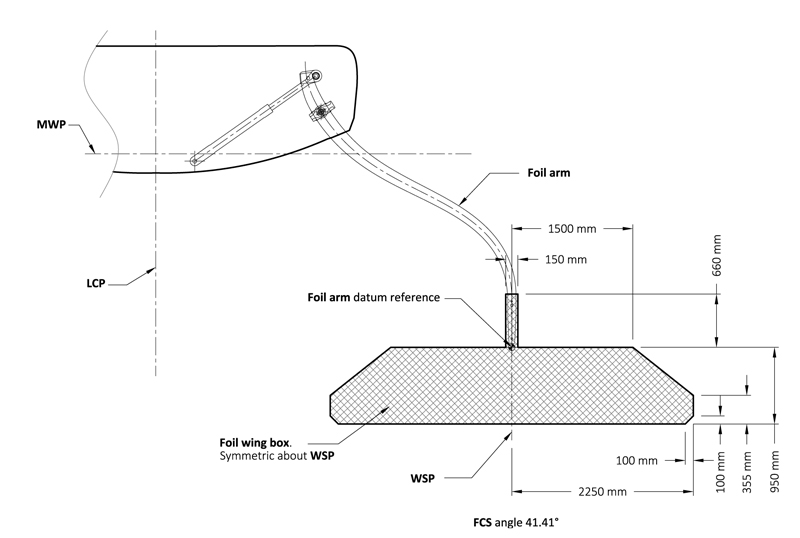
Wing. The dimensions of the wings are defined by a trapezoidal “box” with the longer side of 2.25 meters, the smaller one of 1.5 meters and a height of 95 centimeters.
Emilio Martinelli





